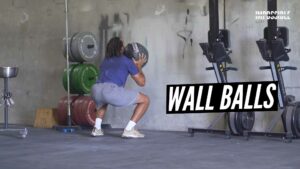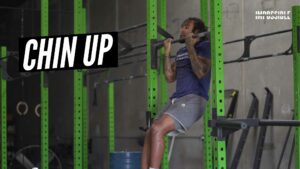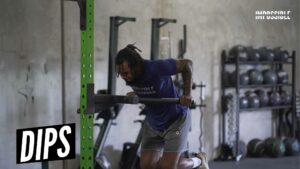The double under is a jump rope variation in which the rope passes under the feet twice during one jump. This is an exercise that requires a lot of practice and can be frustrating as you begin to learn it.
You will need an appropriately-sized jump rope to ensure success with this movement. To make sure your rope is the correct size for your body, hold the handles with the rope in front of your body. Step one foot into the middle of the rope and pull the handles up until the rope is taut. The handles should come up to about armpit-height.
Once you have your rope sized and ready to go, it’s time to attempt double unders.
How to do Double Unders
You want to be sure that you’re skilled at doing single unders before attempting doubles. Warm up with a minute of single unders before attempting your double unders.
Start with the handles in your hands. Start by doing a few single unders. When you’re ready, speed up the rope. When you jump, the rope should make two rotations during your one jump. Once the rope has successfully passed under your feet twice during the jump, that is one rep.
A few key points to remember: the double under requires more speed on the rope – not an increase of the speed of the jump. You want to be a little more explosive with your jump, but it does not need to be faster than your normal single under jump.
Make sure that your hands stay next to your hip points as you’re performing your double unders. It’s common to see people go wider with the hands which in turn makes the rope shorter. A shorter rope means that you’re more likely to trip.
You also want to think about the rotation of the rope being initiated by fast rotations of the wrist – not the shoulders.
Lastly, stay tall when you jump. Think about your head reaching up towards the ceiling, and avoid tucking your knees to your chest or doing a “pike” jump (sending the hips back).
Double Under Practice
If you’re just learning how to do double unders, it may be helpful to incorporate an attempt or two in a rhythm during your single unders. For example, do three single unders and then attempt a double under. If you make the attempt, continue on with three more single unders and then another double under attempt.
Continue in this way until you can eliminate single unders between attempts. Again, this is a very skilled movement, so be patient and consistent with your practice!








